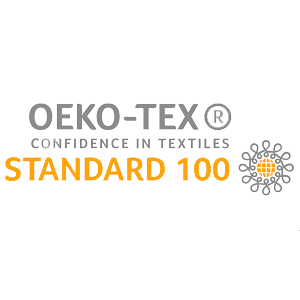What is the best fabric for Yoga clothing?
What is the Best Fabric for Yoga Clothing?
Introduction:
Yoga has gained immense popularity in recent years as a form of exercise that not only improves physical health but also enhances mental well-being. When it comes to practicing yoga, it is crucial to wear clothing that allows free movement, provides comfort, and promotes breathability. Choosing the right fabric for yoga clothing is essential to ensure optimum performance and comfort during yoga practice. In this article, we will explore the various fabrics that make excellent choices for yoga clothing, highlighting their key features, benefits, and drawbacks.
Cotton - The Classic Choice
Cotton is a widely favored fabric for yoga clothing due to its natural breathability, comfort, and ability to absorb moisture. It allows perspiration to evaporate quickly, keeping you cool and dry throughout your practice. Additionally, cotton fabrics are typically soft and gentle against the skin, minimizing irritation during stretching and movement. However, it's important to note that pure cotton fabrics can often stretch out of shape and lose their elasticity over time.
Polyester - The Moisture-Wicking Wonder
Polyester is a synthetic fabric that has become increasingly popular in the production of yoga clothing. Its moisture-wicking properties allow the fabric to draw sweat away from the body, keeping you dry and comfortable. Polyester yoga clothing also tends to dry quickly, making it an excellent choice for intense yoga sessions and hot yoga practices. One drawback of polyester is that it doesn't have the same level of breathability as natural fabrics and may cause a build-up of heat.
Nylon - The Ultimate Stretch
Nylon is another popular synthetic fabric commonly found in yoga clothing. Known for its exceptional flexibility and elasticity, it offers unrestricted movement during yoga poses. Nylon also has moisture-wicking properties, keeping you cool and preventing excessive sweating. However, similar to polyester, nylon may reduce breathability and make you feel warmer during intense yoga sessions.
Bamboo - The Sustainable and Comfortable Choice
Bamboo fabric, derived from the bamboo plant, is an eco-friendly option often used in yoga clothing. It is naturally breathable, hypoallergenic, and has antibacterial properties, making it ideal for sensitive skin. Bamboo fabric also has excellent moisture-wicking abilities, keeping you dry even during intense workouts. Additionally, this fabric is soft to touch, providing a luxurious and comfortable feel. On the downside, bamboo fabric has less stretch compared to synthetic materials and may require gentle care to maintain its longevity.
Spandex - The Contouring Companion
Spandex, also known as Lycra or elastane, is a popular fabric choice for yoga clothing due to its exceptional stretch and recovery properties. It allows the fabric to conform to your body shape, providing a snug fit and maximum flexibility during yoga poses. Spandex is often blended with other materials like cotton or polyester to enhance comfort and breathability. However, some people find spandex to be less breathable and may feel restricted by its compressive nature.
Conclusion:
When selecting yoga clothing, finding the right fabric is crucial for an optimal yoga experience. Each fabric discussed in this article offers unique benefits, allowing you to choose the one that aligns with your preferences and yoga practice requirements. Whether you opt for the classic comfort of cotton, the moisture-wicking wonders of polyester and nylon, the sustainability of bamboo, or the contouring qualities of spandex, it's important to prioritize comfort, flexibility, breathability, and moisture management. By selecting the perfect fabric for your yoga attire, you can enhance your performance, enjoy greater comfort, and fully immerse yourself in the transformative practice of yoga.












